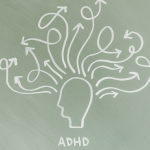Chocolate and Cardiovascular Disease
Jacob Schor, ND, FABNO
A new British survey has revealed that 9 out of 10 people like chocolate. The tenth lies. – Robert Paul
Research tells us 14 out of any 10 individuals like chocolate. – Sandra Boynton
It is almost time to put chocolate onto our list of first interventions for preventing and treating heart disease. Your patients may think you are joking when you first mention this, but this is a serious suggestion.
A better way to introduce your patients to the idea that chocolate is healthy is to tell them the story of the Kuna.
The Kuna Tribe
The Kuna are a tribe of indigenous people who live along the coast of Panama. They have long been famous in the world of nutritionists and cardiologists who study hypertension. Since the 1940s, researchers have known that the Kuna have neither hypertension nor cardiovascular disease. In 1997, researchers tested blood pressures in 92 Kuna living in island communities and were unable to find a single case of diastolic hypertension. They found no difference in blood pressure readings between individuals older than 60 years and those between 20 and 30 years old. The situation changed entirely for those individuals who left their homes and moved to Panama City. Almost 11% of the Kuna who moved to the city had high blood pressure. Living in the city, blood pressure increased with age: in those older that 60 years, more than 45% had elevated blood pressure. This relation between age and blood pressure was statistically significant.[i] Salt consumption was no different between city and island dwellers.
In 2006, Marjorie McCullough and colleagues from Harvard reported on their successful efforts to overcome a great many logistic problems and survey the eating habits of the Kuna to calculate daily nutrient intakes. McCullough’s data tell us that island-dwelling Kuna consumed 10 times the amount of cocoa-containing beverages, 4 times the amount of fish, and twice the amount of fruit, as urban Kuna.[ii]
This information led the Harvard researchers to propose a theory to explain the Kuna’s “immunity” to hypertension: “We have identified a specific food that probably makes an important contribution to cardiovascular status. Island-dwelling Kuna drink more than 5 cups of flavanol-rich cocoa per day and incorporate that cocoa into many recipes. Mainland Kuna ingest little cocoa, and what they take is flavanol-poor.”
The Kuna drink a great deal of minimally processed cocoa that still contains high levels of polyphenols, in particular flavanols that trigger production of nitric oxide synthases. These enzymes increase the amount of nitric oxide in the blood. Nitric oxide is a potent vasodilator that improves the function of blood vessels. The Kuna eat so much chocolate that it increases nitric oxide and lowers their blood pressure.[iii] These lessons from the Kuna can be translated and applied to treating blood pressure in our patient populations.
There are several clinical studies already published suggesting chocolate lowers blood pressure. A March 2010 study published in the American Journal of Hypertension describes an experiment in which 102 patients with high blood pressure, severe enough to already have caused end organ damage, were randomly given either 6 or 25 g/d of flavanol-rich dark chocolate for 3 months. Average blood pressures of both groups dropped. The larger dose of chocolate did not make the blood pressure drop any more than the 6 gram dose.[iv] In other words, it does not take much chocolate to make a difference considering that 6 grams is only about one quarter of an ounce.
A few months earlier, the same authors had completed a meta-analysis of earlier chocolate hypertension studies, analyzing data from 10 trials with a total 294 people. In this analysis, chocolate decreased systolic blood pressure by an average of -4.5 mm Hg and diastolic pressure by an average of -2.5 mm Hg.[v]
Decreased Vascular Inflammation
Chocolate protects against heart disease in several ways; it does more than merely lower blood pressure. It decreases vascular inflammation. In a November 2009 paper, Spanish researchers tell us that a daily dose of chocolate milk decreased numerous blood markers of vascular inflammation.[vi] A paper from 2008 tells us that a daily dose of chocolate providing 700 mg of flavanols for a month caused impressive changes in blood lipids in their study participants. After just 1 week, low-density lipoprotein fell by 6%, and high-density lipoprotein rose by 9%. Eating chocolate also reduced highly sensitive C-reactive protein levels in women.[vii]
The Ancient Mayans regarded chocolate as an aphrodisiac.[viii] Astute readers will recall that sildenafil (the drug we know as Viagra) was initially developed to treat heart disease, as it increases nitric oxide, thus acting as a vasodilator. It does so by a different mechanism, of course; sildenafil is a specific inhibitor of cGMP-specific phosphodiesterase type 5 in the penis. Chocolate flavanols increase conversion of l-arginine to nitric oxide throughout the body. As it is already common that many practitioners suggest l-arginine, often with pycnogenol, to patients who have erectile dysfunction to increase nitric oxide levels, it might produce a greater effect if chocolate was added to the prescription.
A recent study was unable to find a correlation between chocolate consumption and sexual satisfaction in women.[ix] This is not surprising. It is not even clear that Viagra works for this purpose.[x] Besides, these women were eating the wrong kind of chocolate.
Flavanol
There is 1 major problem with all of this recent chocolate research. It is why I write that “it is almost time to put chocolate on our list of possible treatments for hypertension and cardiovascular disease.” The chocolates used in these clinical trials are not the chocolates we can purchase in stores. Even the high-cocoa content bars, the ones that say 70% cocoa solids, will not do the trick.
All of these commercial chocolates contain little flavanol. These chemicals are destroyed by heat during processing. It does not matter whether or not the chocolate is organic, grown on small farms, or lovingly tended. Flavanols are destroyed by heat. The chocolates used in these various clinical trials are made using special low-heat processing technology developed in Europe.
 Jacob Schor, ND, FABNO, is a 1991 graduate of NCNM and has practiced in Denver for the past 17 years. He served as president of the CANP from 1992 to 1999. He has served on the board of directors of the OncANP since 2006 and currently acts as secretary to the board. He is a Fellow of the ABNO. He was shocked and humbled at the 2008 convention of the AANP to be presented with the Vis Award, an honor bestowed in the memory of William Mitchell. He is lucky to practice with his wife, Rena Bloom, ND. Dr.
Jacob Schor, ND, FABNO, is a 1991 graduate of NCNM and has practiced in Denver for the past 17 years. He served as president of the CANP from 1992 to 1999. He has served on the board of directors of the OncANP since 2006 and currently acts as secretary to the board. He is a Fellow of the ABNO. He was shocked and humbled at the 2008 convention of the AANP to be presented with the Vis Award, an honor bestowed in the memory of William Mitchell. He is lucky to practice with his wife, Rena Bloom, ND. Dr.
References
- 1. Hollenberg NK, Martinez G, McCullough M, et al. Aging, acculturation, salt intake, and hypertension in the Kuna of Panama. 1997;29(1 Pt 2):171-176.
- 2. McCullough ML, Chevaux K, Jackson L, et al. Hypertension, the Kuna, and the epidemiology of flavanols. J Cardiovasc Pharmacol. 2006;47(suppl 2):S103-S109; discussion 119-21.
- 3. K Hollenberg N. Vascular action of cocoa flavanols in humans: the roots of the story. J Cardiovasc Pharmacol. 2006;47(suppl 2):S99-S102; discussion S119-S121.
- 4. Desch S, Kobler D, Schmidt J, et al. Low vs. higher-dose dark chocolate and blood pressure in cardiovascular high-risk patients. Am J Hypertens. Am J Hypertens. 2010;23(6):694-700.
- 5. Desch S, Schmidt J, Kobler D, Am J Hypertens. 2010 Jun;23(6):694-700. Effect of cocoa products on blood pressure: systematic review and meta-analysis. Am J Hypertens. 2010;23(1):97-103.
- 6. Monagas M, Khan N, Andres-Lacueva C, et al. Effect of cocoa powder on the modulation of inflammatory biomarkers in patients at high risk of cardiovascular disease. Am J Clin Nutr. 2009;90(5):1144-1150.
- 7. Hamed MS, Gambert S, Bliden KP, et al. Dark chocolate effect on platelet activity, C-reactive protein and lipid profile: a pilot study. South Med J. 2008;101(12):1203-1208.
- 8. Lippi D. Chocolate and medicine: dangerous liaisons? 2009;25(11-12):1100-1103.
- 9. Salonia A, Fabbri F, Zanni G, et al. Chocolate and women’s sexual health: An intriguing correlation. J Sex Med. 2006;3(3):476-482.
- 1 Chivers ML, Rosen RC. Phosphodiesterase type 5 inhibitors and female sexual response: faulty protocols or paradigms? J Sex Med. 2010;7(2 Pt 2):858-872.










